The Cody Firearms Museum
The Cody Firearms Museum in Cody, Wyoming, is home to one of the of the largest collections of firearms in the United States, comprising some 7,000 weapons spanning 800 years of history. The museum is part of the Buffalo Bill Center of the West, the most popular cultural attraction in the Yellowstone National Park region. The facility draws more than 175,000 visitors a year to its museums that explore history, the natural world, Native American culture, western art.
In 2018, CFM embarked on a $12.5 million renovation and expansion. Museum Curator Ashley Hlebinsky says one of the goals of the project was to interpret all the ways – good and bad – that guns have been a part of the human endeavor.
Videobred partnered with the internationally acclaimed exhibition and experience design firm Gallagher & Associates to produce five high-profile videos for the updated space. The pieces welcomed visitors to the museum and helped them explore the evolution of firearms technology, the role of sportsmen in the conservation movement, the many costs of armed conflict, and the art of collecting firearms.
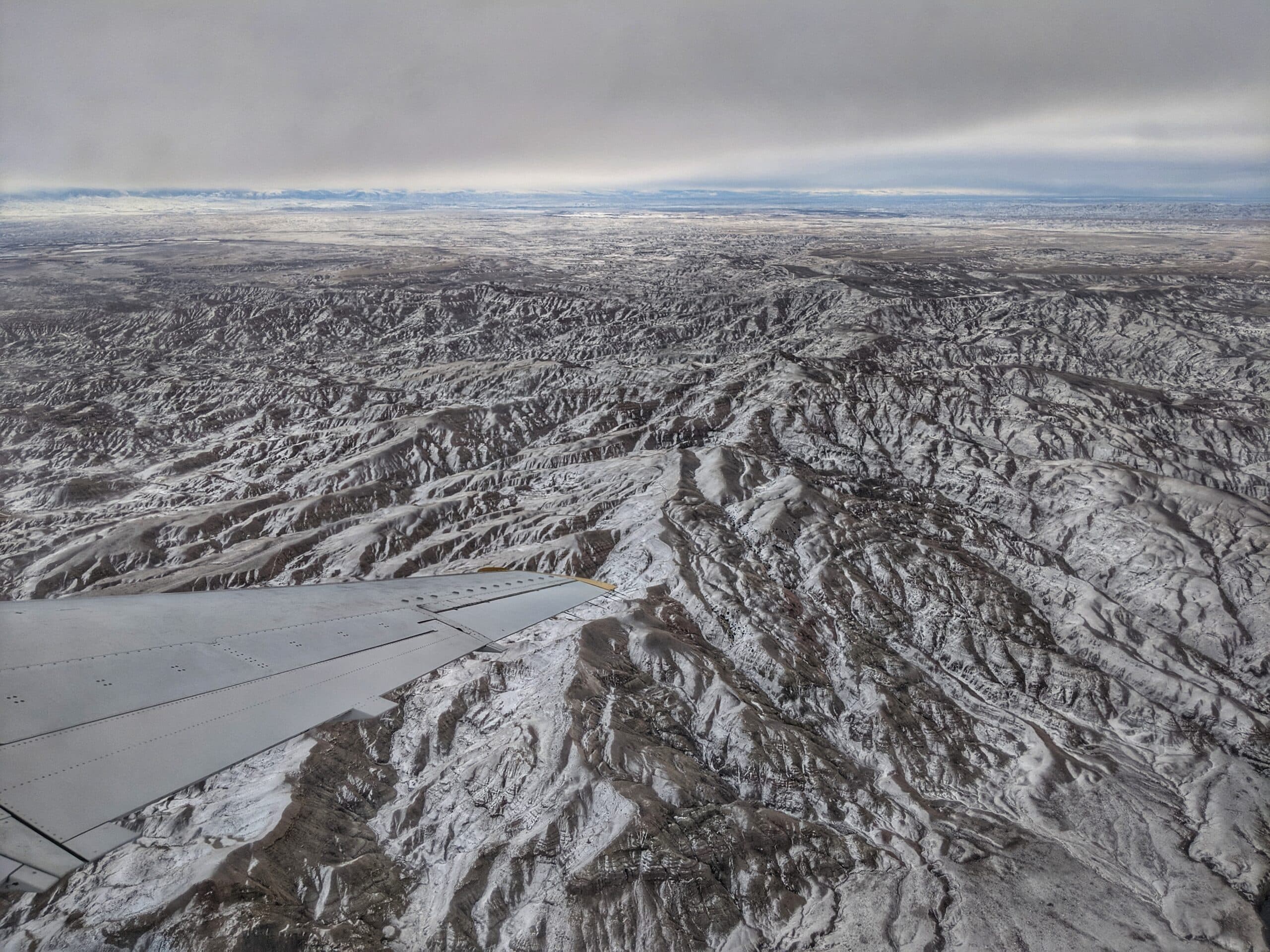
For more than a decade, Videobred has produced memorable video experiences that immerse museum visitors in the drama of some of America’s greatest stories. The company’s work can be seen at venues nationwide, including the U.S. Capitol Visitor Center, the Hall of Presidents at Walt Disney World, the National World War I Museum, The Sazerac House in New Orleans, the LBJ Foundation and Presidential Library, and the forthcoming National Museum of African American Music in Nashville.
The Videobred Process
G&A brought Videobred in to the later stages of the project, leaving about five months of production time to research, shoot, edit, post-produce and install the five videos prior to CFM’s grand reopening in July 2019.
After developing a detailed production schedule with key milestones, deadlines and deliverables, the Videobred team began the pre-production process with a series of conversations with G&A’s Film Director Vanessa Patchett and Digital Producer Staci Hou as well as the CFM staff to discern the key elements of each video and to refine the respective story lines.
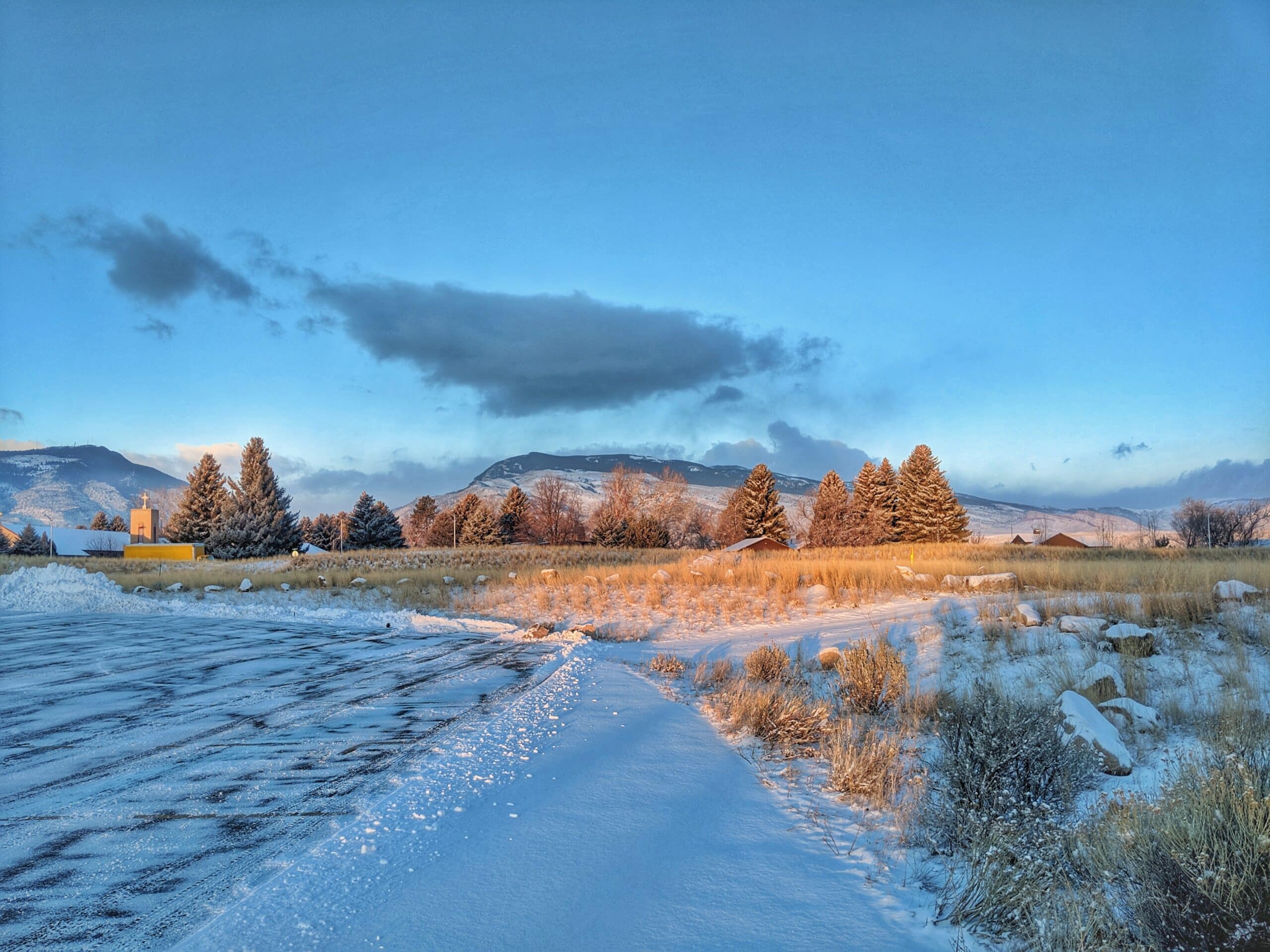
“Communication is critical,” says Producer Fiona Martin. “We’re very clear with our clients about our production process and we build a detailed timeline so that everyone knows what benchmarks we need to hit to stay on schedule.”
Preliminary research and scripting of the pieces took two months. Principle photography occurred over two days in Cody, a town of about 10,000 people in northwestern Wyoming, just outside the eastern entrance to Yellowstone. Videographers also spent a day with CFM staff at a gathering of firearms collectors in Baltimore. That left three months for post-production of the five videos.
At every step of the production process, the Videobred team seamlessly coordinated creative and production tasks with CFM staff in Wyoming, as well as G&A staff in New York City and Portland, Oregon. Videobred integrated direction from G&A as well as feedback from the museum curators at every step of the production process to ensure content requirements and production values met all expectations and deadlines.
The result is five stunning videos that enhance the visitor’s experience and enrich their understanding of the role of firearms throughout American history.
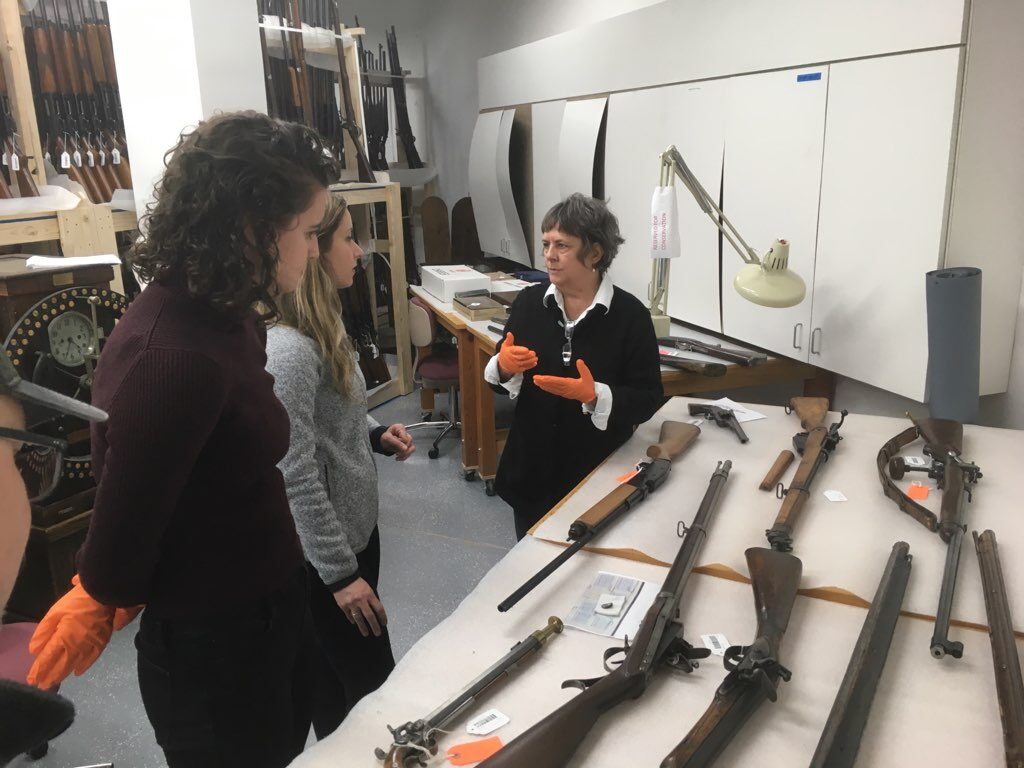
The Films – Challenges and Solutions
An Introductory Message from curator Ashley Hlebinsky greets visitors entering the museum. This brief video was shot in a unique vertical presentation to give the effect of a Hlebinsky offering a personal welcome to each patron.
Pence and Director of Photography Clay Brady scouted several locations at the Center of the West to use for the video before deciding on a recreation of the art studio of legendary painter and sculptor Frederic Remington. The location provided a visually compelling backdrop for the piece, but because of the fragile artifacts in the space, museum staff would not allow the film crew into the exhibit itself. Brady employed creative measures to light the scene and devised a makeshift platform for Hlebinsky.
“We had Ashley stand on padding so as to not damage the antique rug with her boots and then we used a stack of printer paper to get her to the correct height for camera,” says Brady. “With some trial and error we achieved the friendly and welcoming framing this film required, and an overall look and mood that matches the other museum videos.”
The Evolution of Firearms illustrates the dramatic changes in firing mechanisms throughout history, from a 13th century hand cannon to contemporary automatic weapons. Visitors watch demonstrations of selected weapons recorded in stunning 4K, 1,000 frame/second resolution. The firing sequences are presented first at normal speed, then in a slow reverse, and then CFM Draft 021320 Page 3 of forward in ultra-slow motion to reveal the intricate workings of each unique mechanism.
The videos are displayed on four separate monitors, which are timed to show the demonstrations in a carefully choreographed progression that was developed and implemented by Pence and his team.
“We look at all the different options for presenting the content and never let the technology get in the way of the story,” says Pence. “The ability to pre-visualize a presentation in our heads and on paper before we go to pixel is one of the things that really gives Videobred an advantage over other production and post- production companies,” says Pence.
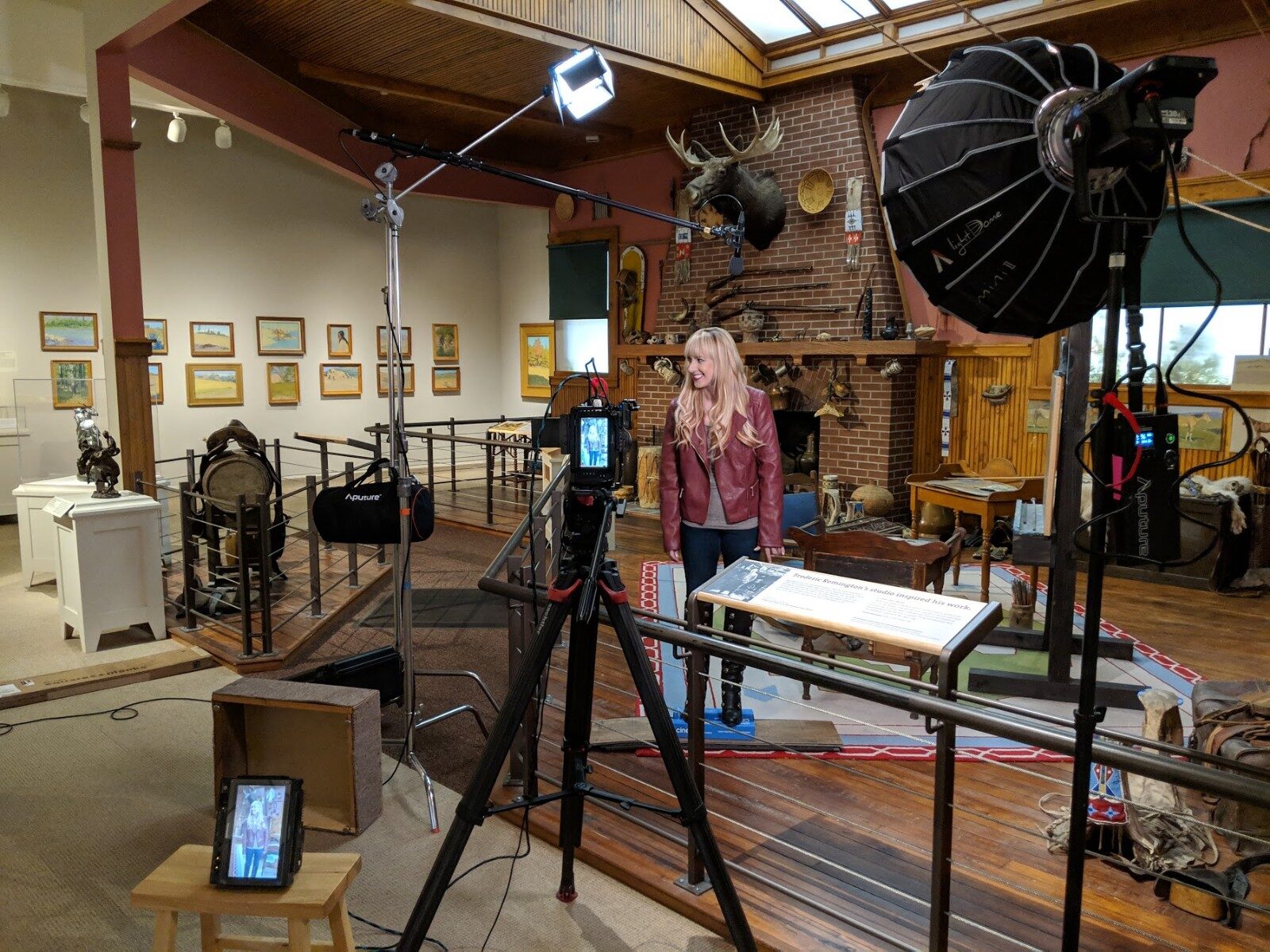
Sportsmen and Conservation posed the creative challenge of telling the nearly 500-year history of hunting with firearms in America, and how sportsmen helped start and sustain the wildlife conservation movement.
“It would be easy to make this a hunter-versus-environmentalist story,” says writer and researcher John Gregory. “But we worked to present a nuanced narrative that brought to life the conflicts and cooperation that occurred among people who hunted for sport, those who hunted for survival, and those who wanted to protect the nation’s wildlife.”
“It was a delicate dance around language and perspective,” says producer Fiona Martin. “We had intensive discussions with the Gallagher team and the CFM historians to make sure we communicated the overall narrative without any bias while still bringing an emotional impact to the story.”
The production team acquired archival sketches, paintings, photographs and film, then restored and up-scaled the material so it could be presented in large- screen, high-definition clarity. Videobred’s extensive roster of voice-over talent read historical quotes from prominent figures featured in the narrative to make their words come alive for viewers.
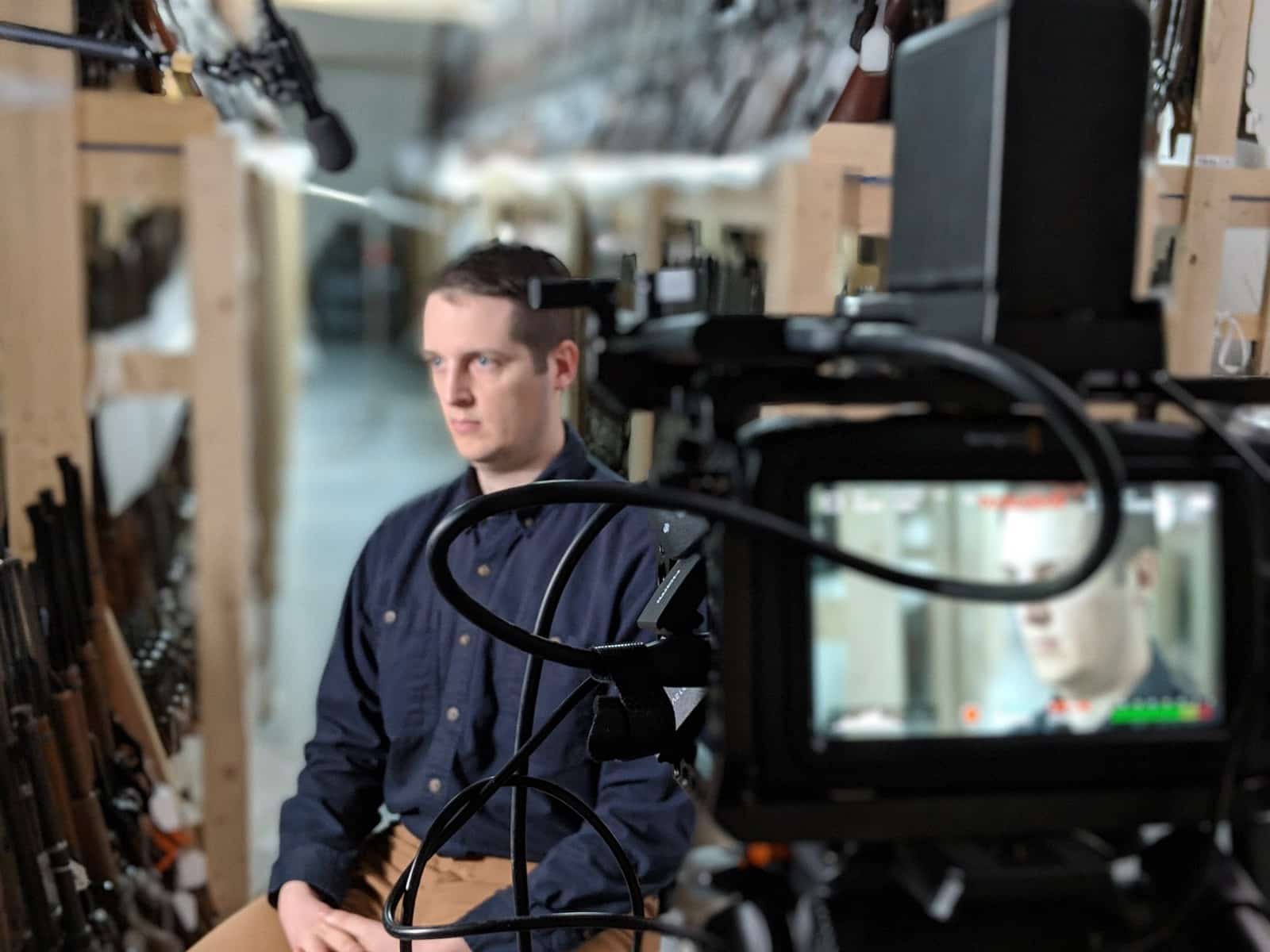
The Costs of War presented a different creative challenge: Create a nonlinear, looping video that visitors could engage with at any point and for any duration, yet still learn about the devastating impacts of armed conflict. Gregory researched and compiled dozens of data sets about conflicts throughout American history that would give viewers an appreciation for the toll of war on military service members, civilians, nations, and the planet. Then Art Director Lindsay Daniels and Animator Ben Bishop devised an ever-evolving series of motion graphics to relate key data points.
“Our mission was to not only give visual meaning to the statistics but also give emotional meaning to the story,” says Daniels. “We understood that on a deeper level, the statistics were more than just numbers, they were people’s lives.”
To enrich the visual presentation, the production team added an evocative soundtrack, archival photographs, historical quotes and thought-provoking questions crafted to encourage dialog among viewers. Daniels also worked with G&A fabricators to integrate the video display into the overall graphic presentation of this exhibit.
“Because visitors are moving in and out of this space, they weren’t likely to see the entire video, so the information design needed to include the exhibit wall into the video story,” says Daniels. “The ideation started on the Videobred side and then looped in the Gallagher team, who modified it and did all the mechanical drawings. It was definitely a collaborative effort.”
The Art of Collecting offers visitors a light-hearted look at the pastime of collecting firearms as objects of art, history, culture and mechanical ingenuity.
“The museum wanted to show that collecting isn’t just an activity of the wealthy or of ‘gun nuts,’ but is an endeavor anyone can enjoy,” says Gregory. “So we highlighted the work of Ashley and Assistant Curator Danny Michael, who bring an infectious mix of knowledge, youthful energy and playful banter to the video.”
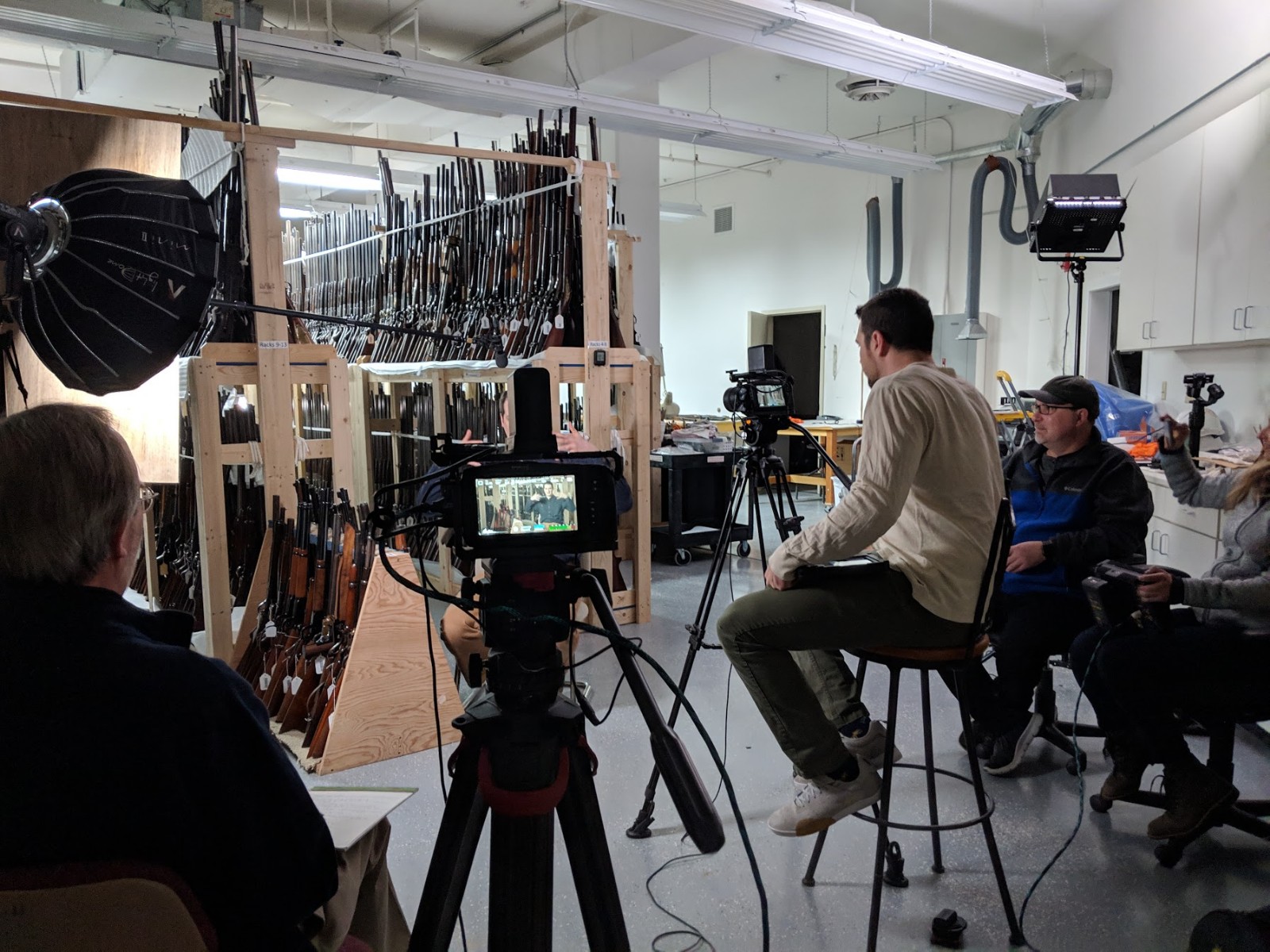
Through interviews with the two curators, visitors learn the history of collecting guns as well as practical tips to help novice enthusiasts launch their own collections. Throughout the piece, viewers get to see stunning close-ups of several prized items in the Cody collection.
“Shooting in tight spaces with bulky film gear and priceless artifacts required a great deal of awareness and patience,” says Brady. “It was worth the many hours necessary to capture the beautiful detail and craftsmanship of the firearms on display at the museum and in these films.”
Hitting the Mark
The renovated Cody Firearms Museum opened in July 2019, drawing critical acclaim from gun aficionados and non-shooters alike. The Wall Street Journal says, “The museum does not shy away from showing their dangers and misuse as instruments of death, yet we also see how guns, in their effects on hunting, warfare, technology and civic order, have shaped civilization itself.”
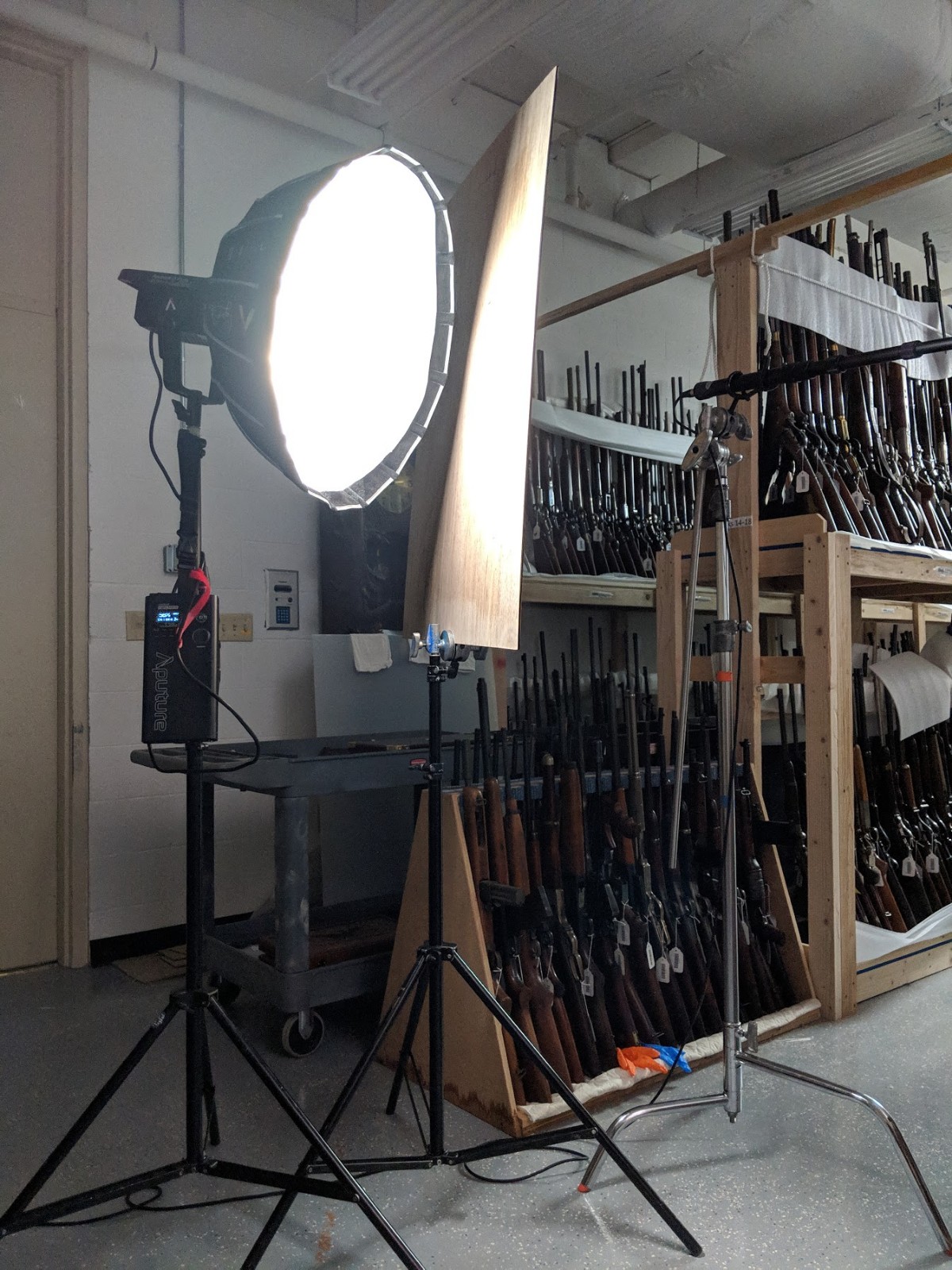
The close working relationship between G&A and Videobred enabled the production teams to meet the tight project deadline, overcome production challenges and create memorable video experiences for museum visitors. “The Videobred team just ‘gets it,’” says G&A’s Staci Hou. “They were able to work seamlessly with G&A to find creative solutions to any challenge from the tight production schedule to the sensitivity of the subject matter.”
“The Gallagher team was very positive and enthusiastic,” says Daniels. “That kind of attitude is always a treat to have on the client side because it instills a confidence and faith in the team, which trickles down into every facet of the job. It allowed us to bring our best game and I think it shows in the videos.”
The diversity of the five CFM videos demonstrates the depth of creative talent, technical craftsmanship, problem-solving skills and commitment to storytelling that the Videobred team brings to each project.
“Whatever canvas is given to us, we’ll make art,” says Pence.
Credits
Videobred team
Want to Know More?
We’re a team of creative problem solvers eager to collaborate.
The Cody Firearms Museum
The Cody Firearms Museum in Cody, Wyoming, is home to one of the of the largest collections of firearms in the United States, comprising some 7,000 weapons spanning 800 years of history. The museum is part of the Buffalo Bill Center of the West, the most popular cultural attraction in the Yellowstone National Park region. The facility draws more than 175,000 visitors a year to its museums that explore history, the natural world, Native American culture, western art.
In 2018, CFM embarked on a $12.5 million renovation and expansion. Museum Curator Ashley Hlebinsky says one of the goals of the project was to interpret all the ways – good and bad – that guns have been a part of the human endeavor.
Videobred partnered with the internationally acclaimed exhibition and experience design firm Gallagher & Associates to produce five high-profile videos for the updated space. The pieces welcomed visitors to the museum and helped them explore the evolution of firearms technology, the role of sportsmen in the conservation movement, the many costs of armed conflict, and the art of collecting firearms.

For more than a decade, Videobred has produced memorable video experiences that immerse museum visitors in the drama of some of America’s greatest stories. The company’s work can be seen at venues nationwide, including the U.S. Capitol Visitor Center, the Hall of Presidents at Walt Disney World, the National World War I Museum, The Sazerac House in New Orleans, the LBJ Foundation and Presidential Library, and the forthcoming National Museum of African American Music in Nashville.
The Videobred Process
G&A brought Videobred in to the later stages of the project, leaving about five months of production time to research, shoot, edit, post-produce and install the five videos prior to CFM’s grand reopening in July 2019.
After developing a detailed production schedule with key milestones, deadlines and deliverables, the Videobred team began the pre-production process with a series of conversations with G&A’s Film Director Vanessa Patchett and Digital Producer Staci Hou as well as the CFM staff to discern the key elements of each video and to refine the respective story lines.

“Communication is critical,” says Producer Fiona Martin. “We’re very clear with our clients about our production process and we build a detailed timeline so that everyone knows what benchmarks we need to hit to stay on schedule.”
Preliminary research and scripting of the pieces took two months. Principle photography occurred over two days in Cody, a town of about 10,000 people in northwestern Wyoming, just outside the eastern entrance to Yellowstone. Videographers also spent a day with CFM staff at a gathering of firearms collectors in Baltimore. That left three months for post-production of the five videos.
At every step of the production process, the Videobred team seamlessly coordinated creative and production tasks with CFM staff in Wyoming, as well as G&A staff in New York City and Portland, Oregon. Videobred integrated direction from G&A as well as feedback from the museum curators at every step of the production process to ensure content requirements and production values met all expectations and deadlines.
The result is five stunning videos that enhance the visitor’s experience and enrich their understanding of the role of firearms throughout American history.

The Films – Challenges and Solutions
An Introductory Message from curator Ashley Hlebinsky greets visitors entering the museum. This brief video was shot in a unique vertical presentation to give the effect of a Hlebinsky offering a personal welcome to each patron.
Pence and Director of Photography Clay Brady scouted several locations at the Center of the West to use for the video before deciding on a recreation of the art studio of legendary painter and sculptor Frederic Remington. The location provided a visually compelling backdrop for the piece, but because of the fragile artifacts in the space, museum staff would not allow the film crew into the exhibit itself. Brady employed creative measures to light the scene and devised a makeshift platform for Hlebinsky.
“We had Ashley stand on padding so as to not damage the antique rug with her boots and then we used a stack of printer paper to get her to the correct height for camera,” says Brady. “With some trial and error we achieved the friendly and welcoming framing this film required, and an overall look and mood that matches the other museum videos.”
The Evolution of Firearms illustrates the dramatic changes in firing mechanisms throughout history, from a 13th century hand cannon to contemporary automatic weapons. Visitors watch demonstrations of selected weapons recorded in stunning 4K, 1,000 frame/second resolution. The firing sequences are presented first at normal speed, then in a slow reverse, and then CFM Draft 021320 Page 3 of forward in ultra-slow motion to reveal the intricate workings of each unique mechanism.
The videos are displayed on four separate monitors, which are timed to show the demonstrations in a carefully choreographed progression that was developed and implemented by Pence and his team.
“We look at all the different options for presenting the content and never let the technology get in the way of the story,” says Pence. “The ability to pre-visualize a presentation in our heads and on paper before we go to pixel is one of the things that really gives Videobred an advantage over other production and post- production companies,” says Pence.

Sportsmen and Conservation posed the creative challenge of telling the nearly 500-year history of hunting with firearms in America, and how sportsmen helped start and sustain the wildlife conservation movement.
“It would be easy to make this a hunter-versus-environmentalist story,” says writer and researcher John Gregory. “But we worked to present a nuanced narrative that brought to life the conflicts and cooperation that occurred among people who hunted for sport, those who hunted for survival, and those who wanted to protect the nation’s wildlife.”
“It was a delicate dance around language and perspective,” says producer Fiona Martin. “We had intensive discussions with the Gallagher team and the CFM historians to make sure we communicated the overall narrative without any bias while still bringing an emotional impact to the story.”
The production team acquired archival sketches, paintings, photographs and film, then restored and up-scaled the material so it could be presented in large- screen, high-definition clarity. Videobred’s extensive roster of voice-over talent read historical quotes from prominent figures featured in the narrative to make their words come alive for viewers.

The Costs of War presented a different creative challenge: Create a nonlinear, looping video that visitors could engage with at any point and for any duration, yet still learn about the devastating impacts of armed conflict. Gregory researched and compiled dozens of data sets about conflicts throughout American history that would give viewers an appreciation for the toll of war on military service members, civilians, nations, and the planet. Then Art Director Lindsay Daniels and Animator Ben Bishop devised an ever-evolving series of motion graphics to relate key data points.
“Our mission was to not only give visual meaning to the statistics but also give emotional meaning to the story,” says Daniels. “We understood that on a deeper level, the statistics were more than just numbers, they were people’s lives.”
To enrich the visual presentation, the production team added an evocative soundtrack, archival photographs, historical quotes and thought-provoking questions crafted to encourage dialog among viewers. Daniels also worked with G&A fabricators to integrate the video display into the overall graphic presentation of this exhibit.
“Because visitors are moving in and out of this space, they weren’t likely to see the entire video, so the information design needed to include the exhibit wall into the video story,” says Daniels. “The ideation started on the Videobred side and then looped in the Gallagher team, who modified it and did all the mechanical drawings. It was definitely a collaborative effort.”
The Art of Collecting offers visitors a light-hearted look at the pastime of collecting firearms as objects of art, history, culture and mechanical ingenuity.
“The museum wanted to show that collecting isn’t just an activity of the wealthy or of ‘gun nuts,’ but is an endeavor anyone can enjoy,” says Gregory. “So we highlighted the work of Ashley and Assistant Curator Danny Michael, who bring an infectious mix of knowledge, youthful energy and playful banter to the video.”

Through interviews with the two curators, visitors learn the history of collecting guns as well as practical tips to help novice enthusiasts launch their own collections. Throughout the piece, viewers get to see stunning close-ups of several prized items in the Cody collection.
“Shooting in tight spaces with bulky film gear and priceless artifacts required a great deal of awareness and patience,” says Brady. “It was worth the many hours necessary to capture the beautiful detail and craftsmanship of the firearms on display at the museum and in these films.”
Hitting the Mark
The renovated Cody Firearms Museum opened in July 2019, drawing critical acclaim from gun aficionados and non-shooters alike. The Wall Street Journal says, “The museum does not shy away from showing their dangers and misuse as instruments of death, yet we also see how guns, in their effects on hunting, warfare, technology and civic order, have shaped civilization itself.”

The close working relationship between G&A and Videobred enabled the production teams to meet the tight project deadline, overcome production challenges and create memorable video experiences for museum visitors. “The Videobred team just ‘gets it,’” says G&A’s Staci Hou. “They were able to work seamlessly with G&A to find creative solutions to any challenge from the tight production schedule to the sensitivity of the subject matter.”
“The Gallagher team was very positive and enthusiastic,” says Daniels. “That kind of attitude is always a treat to have on the client side because it instills a confidence and faith in the team, which trickles down into every facet of the job. It allowed us to bring our best game and I think it shows in the videos.”
The diversity of the five CFM videos demonstrates the depth of creative talent, technical craftsmanship, problem-solving skills and commitment to storytelling that the Videobred team brings to each project.
“Whatever canvas is given to us, we’ll make art,” says Pence.
Credits
Videobred team
Want to Know More?
We’re a team of creative problem solvers eager to collaborate.
